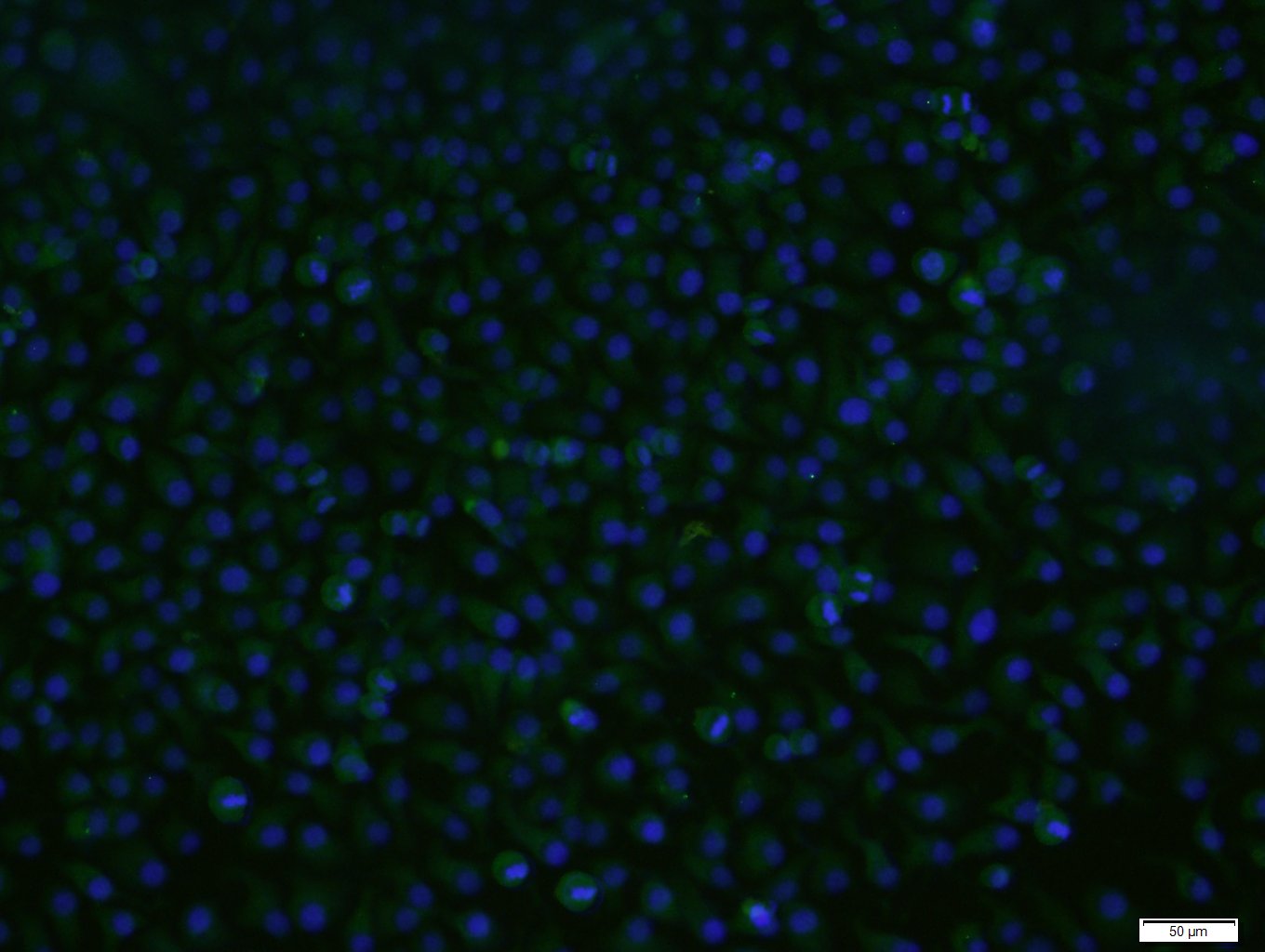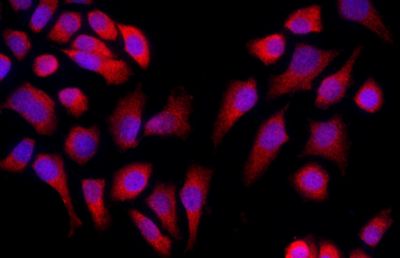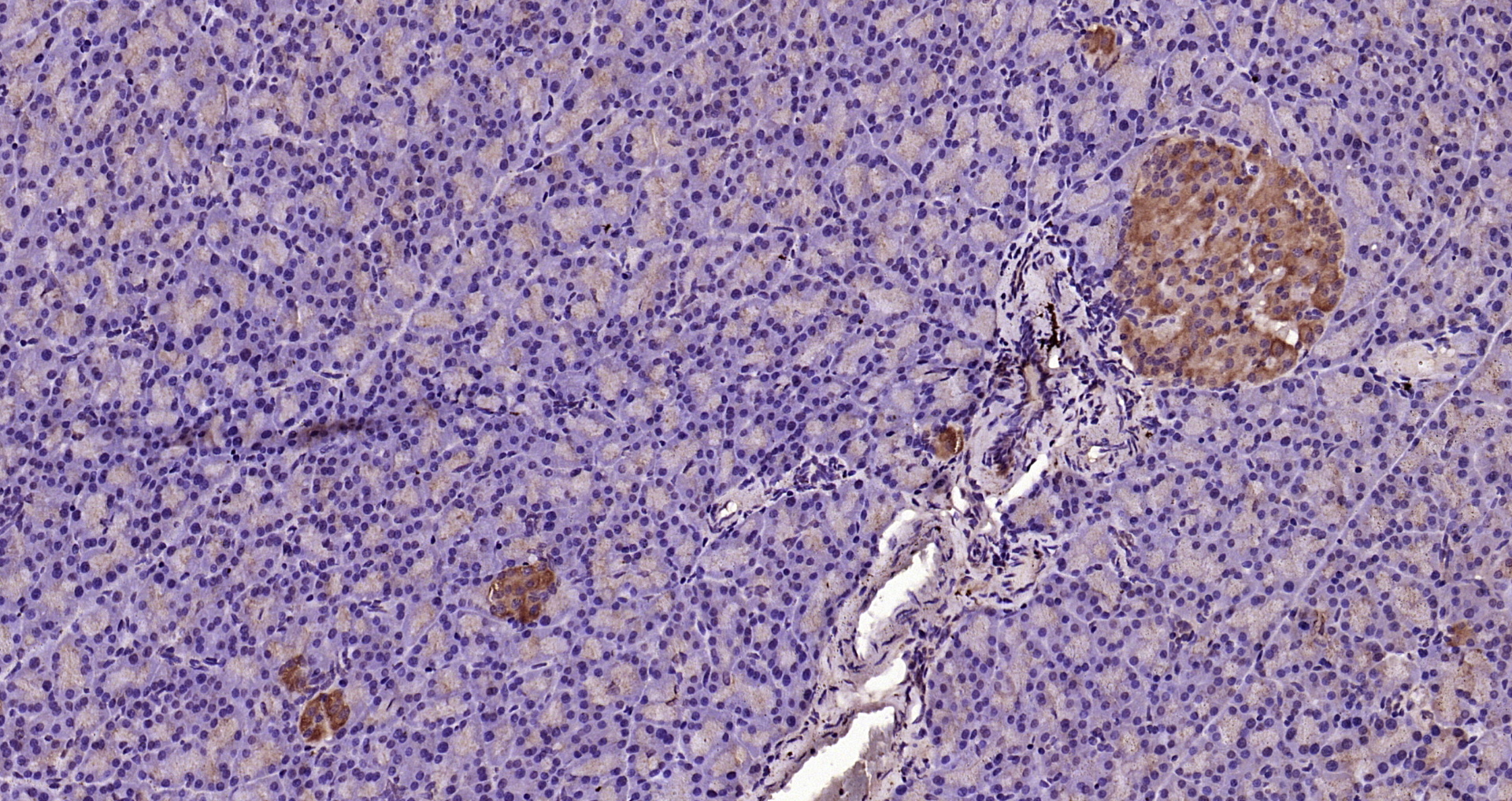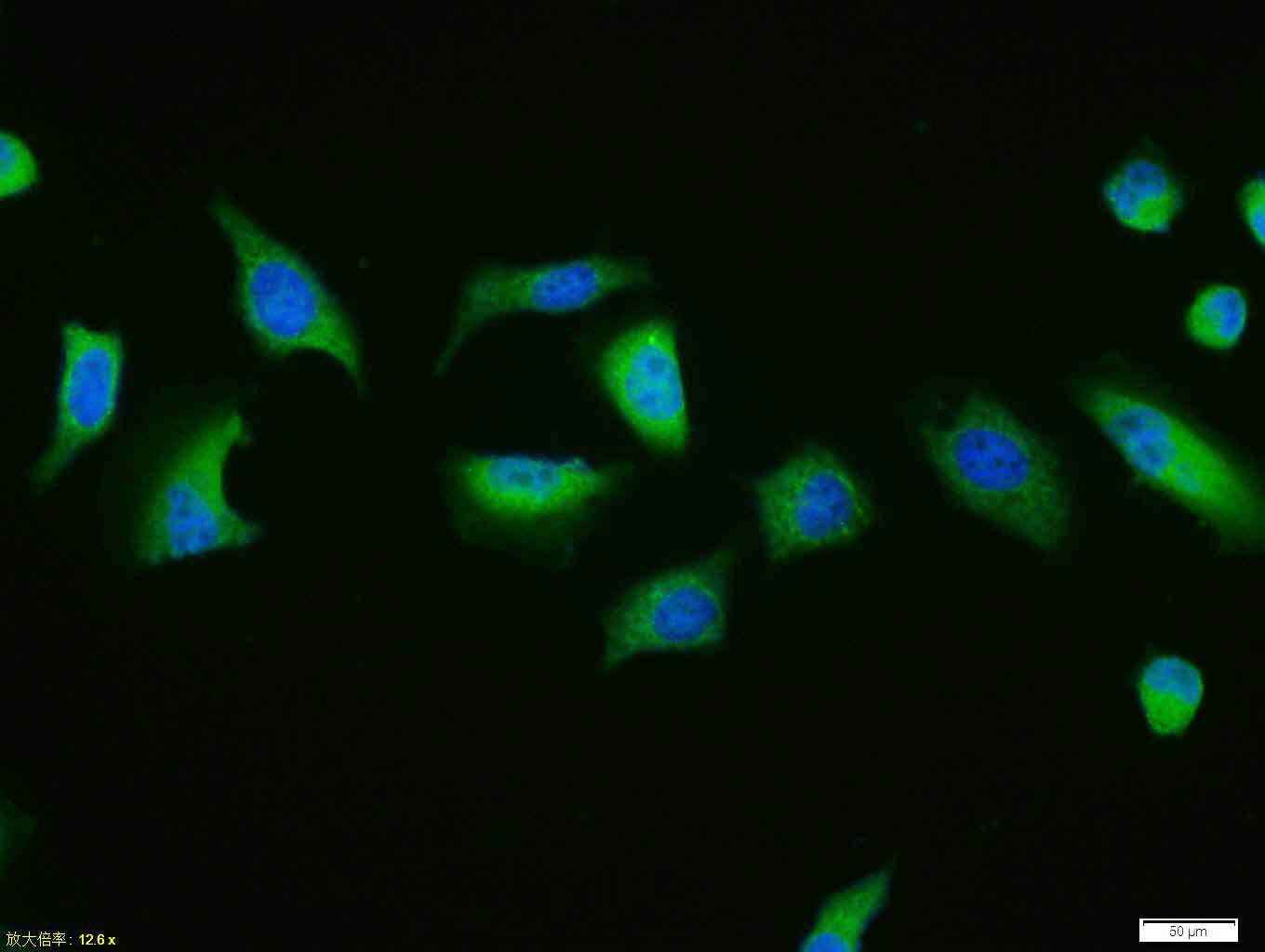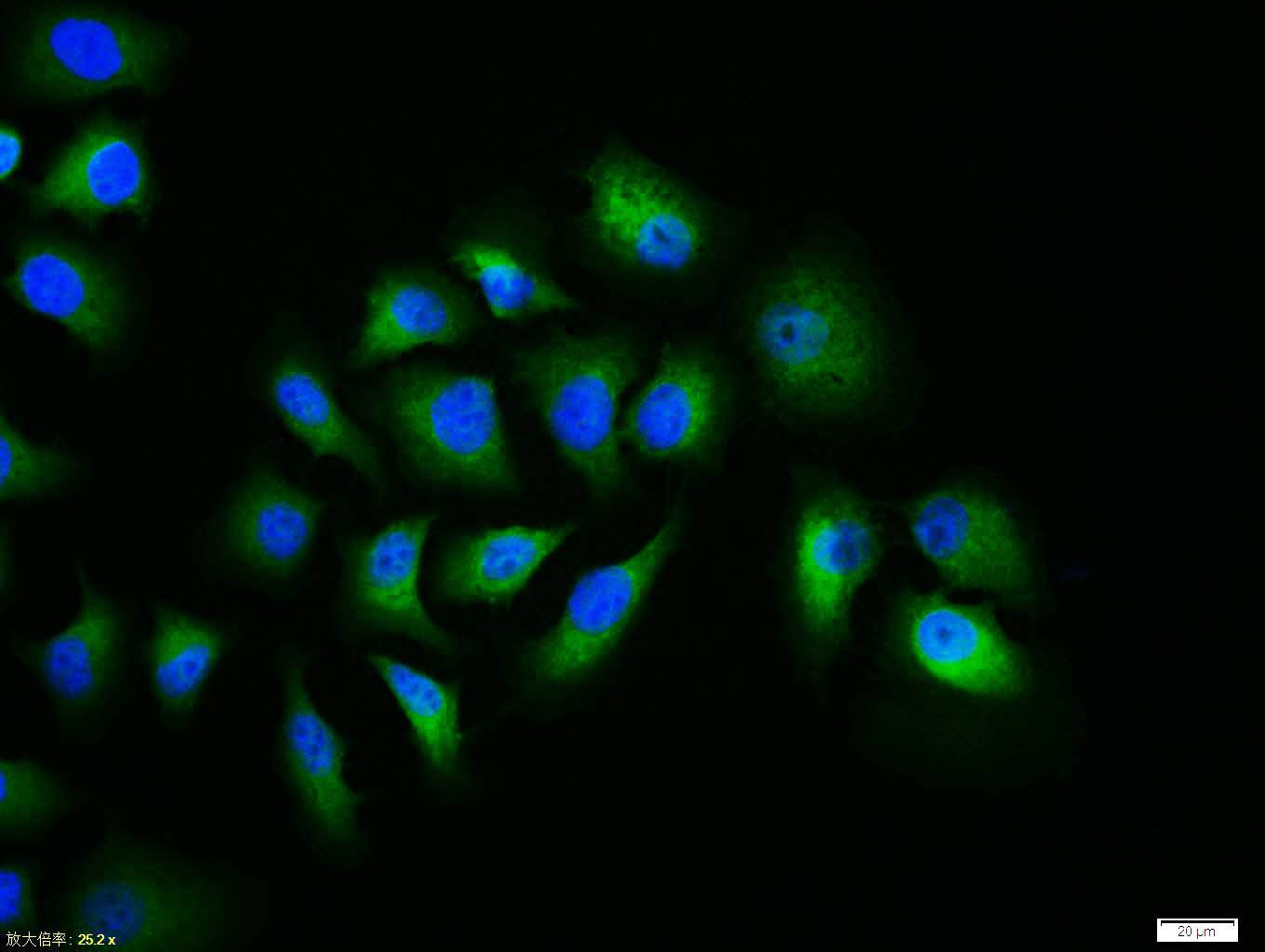
RSC96 probed with Caspase 9 Polyclonal Antibody, Unconjugated (bs-0049R) at 1:100 for 30 minutes followed by incubation with a conjugated secondary (PE Conjugated) (green) for 30 minutes compared to control cells (blue), secondary only (light blue) and isotype control (orange).
Caspase-9 Polyclonal Antibody
BS-0049R
ApplicationsFlow Cytometry, ImmunoFluorescence, Western Blot, ELISA, ImmunoCytoChemistry, ImmunoHistoChemistry, ImmunoHistoChemistry Frozen, ImmunoHistoChemistry Paraffin
Product group Antibodies
ReactivityBovine, Canine, Human, Mouse, Rat
TargetCASP9
Overview
- SupplierBioss
- Product NameCaspase-9 Polyclonal Antibody
- Delivery Days Customer16
- ApplicationsFlow Cytometry, ImmunoFluorescence, Western Blot, ELISA, ImmunoCytoChemistry, ImmunoHistoChemistry, ImmunoHistoChemistry Frozen, ImmunoHistoChemistry Paraffin
- Applications SupplierWB(1:300-5000), ELISA(1:500-1000), FCM(1:20-100), IHC-P(1:200-400), IHC-F(1:100-500), IF(IHC-P)(1:50-200), IF(IHC-F)(1:50-200), IF(ICC)(1:50-200)
- CertificationResearch Use Only
- ClonalityPolyclonal
- Concentration1 ug/ul
- ConjugateUnconjugated
- Gene ID842
- Target nameCASP9
- Target descriptioncaspase 9
- Target synonymsAPAF-3, APAF3, ICE-LAP6, MCH6, PPP1R56, caspase-9, ICE-like apoptotic protease 6, apoptotic protease MCH-6, apoptotic protease activating factor 3, caspase 9, apoptosis-related cysteine peptidase, protein phosphatase 1, regulatory subunit 56
- HostRabbit
- IsotypeIgG
- Protein IDP55211
- Protein NameCaspase-9
- ReactivityBovine, Canine, Human, Mouse, Rat
- Storage Instruction-20°C
- UNSPSC12352203
References
- Zhang M, Chen W, Zong Y, et al. Cognitive-enhancing effects of fibrauretine on Aβ(1-42)-induced Alzheimer's disease by compatibilization with ginsenosides. Neuropeptides. 2020,82:102020. doi: 10.1016/j.npep.2020.102020Read this paper
- Li Z, Guo D, Yin X, et al. Zinc oxide nanoparticles induce human multiple myeloma cell death via reactive oxygen species and Cyt-C/Apaf-1/Caspase-9/Caspase-3 signaling pathway in vitro. Biomed Pharmacother. 2020,122:109712. doi: 10.1016/j.biopha.2019.109712Read this paper
- Han S, Cui C, He H, et al. FHL1 regulates myoblast differentiation and autophagy through its interaction with LC3. J Cell Physiol. 2020,235(5):4667-4678. doi: 10.1002/jcp.29345Read this paper
- Zhu B, Li Y, Hu T, et al. The hepatoprotective effect of polysaccharides from Pleurotus ostreatus on carbon tetrachloride-induced acute liver injury rats. Int J Biol Macromol. 2019,131:1-9. doi: 10.1016/j.ijbiomac.2019.03.043Read this paper
- Khalkar P, Díaz-Argelich N, Antonio Palop J, et al. Novel Methylselenoesters Induce Programed Cell Death via Entosis in Pancreatic Cancer Cells. Int J Mol Sci. 2018,19(10). doi: 10.3390/ijms19102849Read this paper
- Song D, Liang H, Qu B, et al. Moxidectin inhibits glioma cell viability by inducing G0/G1 cell cycle arrest and apoptosis. Oncol Rep. 2018,40(3):1348-1358. doi: 10.3892/or.2018.6561Read this paper
- Guo MB, Wang DC, Liu HF, et al. Lupeol against high-glucose-induced apoptosis via enhancing the anti-oxidative stress in rabbit nucleus pulposus cells. Eur Spine J. 2018,27(10):2609-2620. doi: 10.1007/s00586-018-5687-9Read this paper
- Liu T, Yang T, Xu Z, et al. MicroRNA-193b-3p regulates hepatocyte apoptosis in selenium-deficient broilers by targeting MAML1. J Inorg Biochem. 2018,186:235-245. doi: 10.1016/j.jinorgbio.2018.06.013Read this paper
- Wang Y, Xuan L, Cui X, et al. Ibutilide treatment protects against ER stress induced apoptosis by regulating calumenin expression in tunicamycin treated cardiomyocytes. PLoS One. 2017,12(4):e0173469. doi: 10.1371/journal.pone.0173469Read this paper
- Wang Y, Wang YL, Huang X, et al. Ibutilide protects against cardiomyocytes injury via inhibiting endoplasmic reticulum and mitochondrial stress pathways. Heart Vessels. 2017,32(2):208-215. doi: 10.1007/s00380-016-0891-1Read this paper



